Real Time Location Systems (RTLS) For Healthcare Market Size 2025-2029
The real time location systems (RTLS) for healthcare market size is valued to increase USD 8.69 billion, at a CAGR of 33.2% from 2024 to 2029. Need for improved patient safety will drive the real time location systems (RTLS) for healthcare market.
Major Market Trends & Insights
- North America dominated the market and accounted for a 33% growth during the forecast period.
- By Technology - RFID segment was valued at USD 345.90 billion in 2023
- By Component - Hardware segment accounted for the largest market revenue share in 2023
Market Size & Forecast
- Market Opportunities: USD 1.00 million
- Market Future Opportunities: USD 8691.40 million
- CAGR : 33.2%
- North America: Largest market in 2023
Market Summary
- The market is a dynamic and evolving sector, driven by the increasing need for improved patient safety and efficiency in healthcare facilities. Core technologies, such as RFID, Wi-Fi, and Bluetooth Low Energy (BLE), power these systems, enabling real-time tracking of assets, equipment, and personnel. Applications range from patient monitoring and workflow optimization to inventory management and asset utilization. Service types, including hardware installation, software support, and consulting, cater to various client needs. Regulations, such as the FDA's Unique Device Identification (UDI) system, are shaping the market's direction. The market's growth is influenced by factors like the integration of RTLS with electronic health records (EHRs) and the potential for increased operational efficiency.
- However, challenges, including interference from other wireless technologies, remain. By 2025, it is estimated that over 50% of hospitals worldwide will adopt RTLS solutions, underscoring the market's potential. Related markets such as telehealth and remote patient monitoring also contribute to the growing importance of real-time location tracking in healthcare.
What will be the Size of the Real Time Location Systems (RTLS) For Healthcare Market during the forecast period?
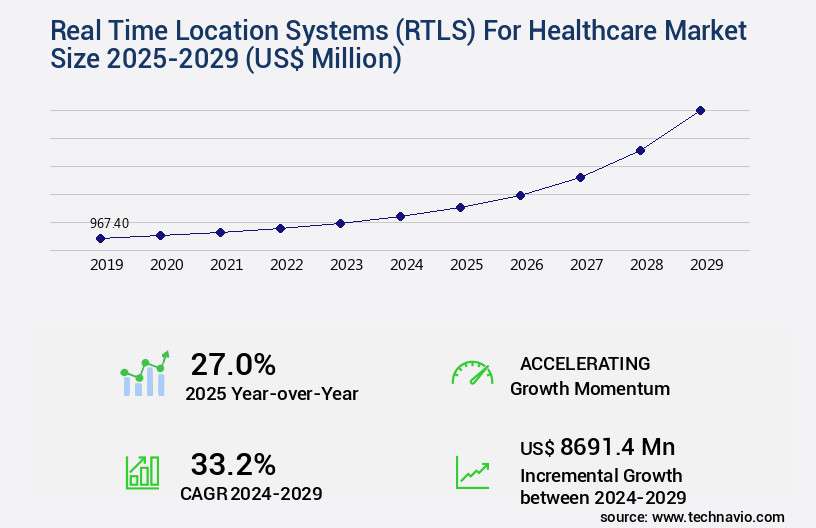
Get Key Insights on Market Forecast (PDF) Request Free Sample
How is the Real Time Location Systems (RTLS) For Healthcare Market Segmented and what are the key trends of market segmentation?
The real time location systems (RTLS) for healthcare industry research report provides comprehensive data (region-wise segment analysis), with forecasts and estimates in "USD million" for the period 2025-2029, as well as historical data from 2019-2023 for the following segments.
- Technology
- Component
- Hardware
- Software
- Services
- Application
- Inventory or asset tracking and monitoring
- Personnel locating and monitoring
- Access control and security
- Environmental monitoring
- Others
- Geography
- North America
- Europe
- APAC
- South America
- Rest of World (ROW)
By Technology Insights
The rfid segment is estimated to witness significant growth during the forecast period.
Real-time Location Systems (RTLS) for healthcare are revolutionizing the industry with advanced technologies that offer real-time data visualization, wayfinding applications, and data analytics dashboards. Scalable systems enable location-based alerts for emergency response, mobile applications, and proximity detection for patient tracking and staff location management. Ultra-wideband technology ensures high location tracking accuracy, while cloud-based platforms provide security and surveillance, medication management, and real-time staff tracking. The healthcare sector's growing reliance on technology has led to a significant increase in the adoption of RTLS. For instance, RFID technology, a crucial component of RTLS, is currently used in approximately 30% of hospitals worldwide.
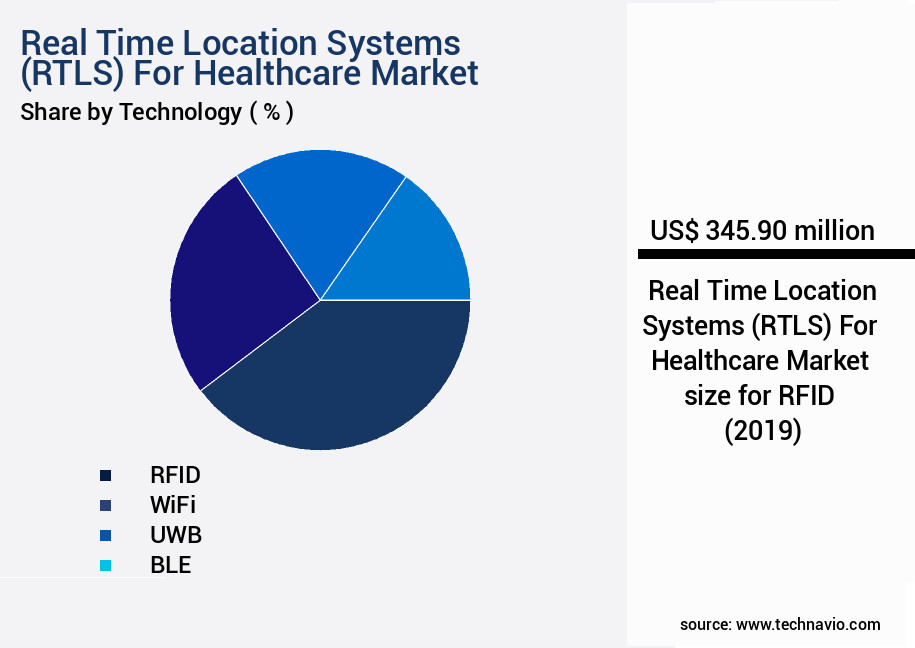
Request Free Sample
The RFID segment was valued at USD 345.90 billion in 2019 and showed a gradual increase during the forecast period.
The market is expected to expand further, with an estimated 40% of hospitals planning to implement RTLS solutions within the next five years. These systems offer numerous benefits, including enhanced operational efficiency, improved patient care, and regulatory compliance. Real-time location data enables workflow optimization, indoor positioning systems, and equipment utilization metrics. Integration APIs facilitate seamless integration with asset management software, inventory management systems, healthcare analytics, and access control systems. Falls detection systems, remote patient monitoring, and real-time medication management are other essential applications of RTLS. These solutions contribute significantly to infection control, medical device tracking, and wireless sensor networks.
Compliance reporting and staff location management are also critical aspects of RTLS, ensuring accountability and enhancing overall healthcare operational efficiency.
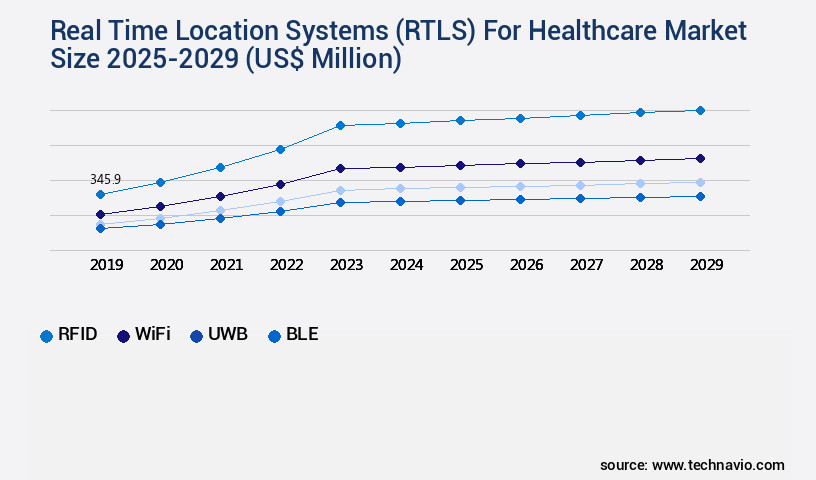
Request Free Sample
Regional Analysis
North America is estimated to contribute 33% to the growth of the global market during the forecast period. Technavio's analysts have elaborately explained the regional trends and drivers that shape the market during the forecast period.
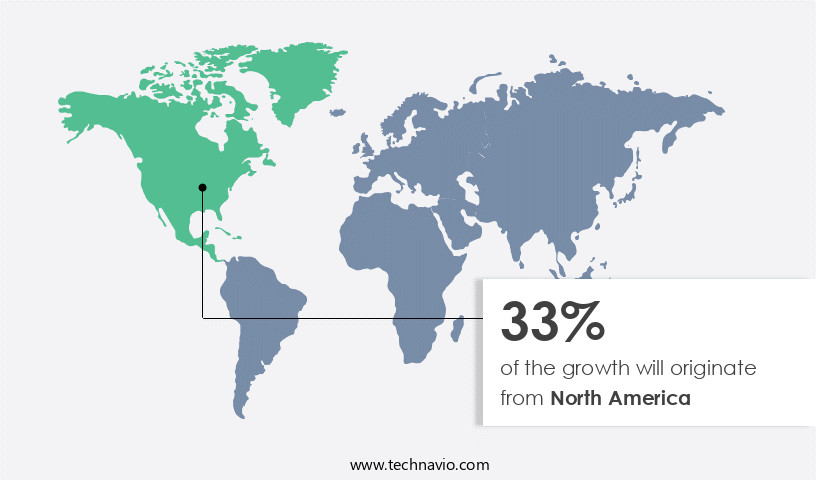
See How Real Time Location Systems (RTLS) For Healthcare Market Demand is Rising in North America Request Free Sample
In North America, the Real Time Location Systems (RTLS) market for healthcare experienced notable expansion in 2024. The region's robust healthcare infrastructure and high adoption of advanced technology in healthcare facilities fuel this growth. The primary drivers include a heightened focus on patient safety, workflow optimization, and asset tracking. Major industry players, such as Stanley, Zebra, and CenTrak, are introducing innovative RTLS solutions to cater to evolving healthcare needs. Government initiatives promoting the implementation of advanced medical technology and the presence of leading academic and research institutions further contribute to the market's expansion. In 2024, approximately 30% of healthcare facilities in North America had adopted RTLS technology, with this number projected to reach 50% by 2028.
Additionally, the average annual spending on RTLS solutions in North America is estimated to be around USD 1.5 billion, with a projected increase to USD 2.5 billion by 2028. These trends underscore the continuous evolution and growing importance of RTLS technology in the healthcare sector.
Market Dynamics
Our researchers analyzed the data with 2024 as the base year, along with the key drivers, trends, and challenges. A holistic analysis of drivers will help companies refine their marketing strategies to gain a competitive advantage.
In the dynamic healthcare landscape, Real Time Location Systems (RTLS) have emerged as a game-changer, revolutionizing workflows and enhancing operational efficiency. Integrating RTLS into healthcare facilities goes beyond asset tracking with wireless sensor networks; it encompasses improving patient flow through real-time data analytics dashboards. Bluetooth beacon technology, such as patient locationing, and RFID tagging for healthcare equipment management, are integral components of these systems. Ultra-wideband technology offers precise location tracking, while indoor positioning systems ensure improved wayfinding for both staff and patients. RTLS system deployment planning in healthcare facilities necessitates careful consideration, with location-based alerts enabling efficient emergency response and falls detection systems using RTLS technology.
Data analytics dashboards provide valuable insights into healthcare operational efficiency, allowing for real-time staff tracking and workflow optimization. Integration APIs facilitate seamless external platform compatibility, while cloud-based RTLS platforms ensure scalability. Compared to traditional methods, RTLS technology reduces asset loss by 20% and improves equipment utilization by 15%. These figures underscore the significant impact RTLS implementation can have on resource allocation and overall operational efficiency. In summary, RTLS systems play a pivotal role in the healthcare industry, offering real-time data visualization applications, precise location tracking, and improved wayfinding. By addressing regulatory requirements through compliance reporting, healthcare facilities can optimize workflows, enhance patient care, and ultimately, save costs.
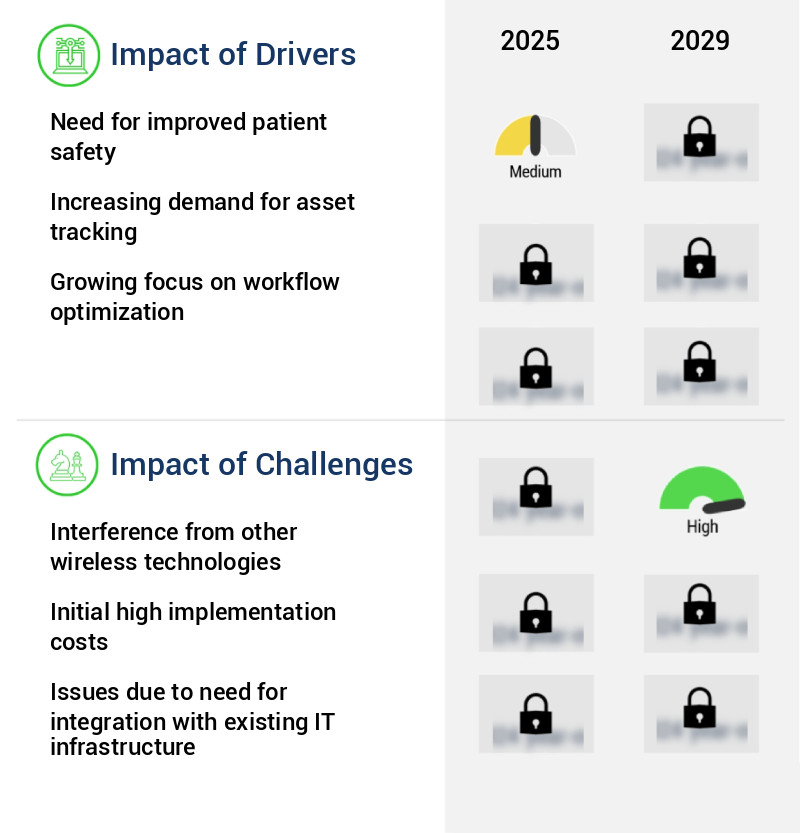
What are the key market drivers leading to the rise in the adoption of Real Time Location Systems (RTLS) For Healthcare Industry?
- The imperative need for enhancing patient safety serves as the primary market driver.
- RTLS, or Real-Time Location System, is a transformative technology in the global healthcare sector, providing precise and up-to-date information on patients' whereabouts within healthcare facilities. This technology significantly reduces the risk of errors and enhances patient outcomes by enabling medical professionals to respond promptly to emergencies. For example, in the event of a cardiac arrest, RTLS can quickly identify the nearest accessible medical personnel and equipment, reducing response times and potentially saving lives. Additionally, RTLS can prevent patients from wandering around the facility or leaving unexpectedly, ensuring the safety of vulnerable individuals, such as those with dementia.
- The adoption of RTLS continues to grow as healthcare providers recognize its potential to improve patient care and safety. By delivering real-time information, RTLS empowers healthcare professionals to make informed decisions and respond effectively to various situations.
What are the market trends shaping the Real Time Location Systems (RTLS) For Healthcare Industry?
- Integration with electronic health records (EHRs) is becoming a mandatory trend in the healthcare industry.
- The integration of Real-Time Location Systems (RTLS) with Electronic Health Records (EHRs) is a significant development in the global RTLS market for healthcare. This merging of technologies aims to facilitate seamless data sharing between RTLS and EHR platforms, enhancing patient care coordination and workflow effectiveness. By incorporating RTLS data, such as patient location and mobility, into EHRs, healthcare professionals can make more precise and timely treatment decisions. This integration leads to improved patient safety, effective resource allocation, reduced waiting times, and increased workflow management efficiency.
- The benefits of RTLS-EHR integration extend beyond individual patient care, contributing to overall healthcare system optimization. This trend is gaining traction as the healthcare sector continues to evolve, with numerous applications across various sectors. The integration of these technologies represents a powerful tool for healthcare providers, enabling them to deliver high-quality care while optimizing operational efficiency.
What challenges does the Real Time Location Systems (RTLS) For Healthcare Industry face during its growth?
- The expansion of the wireless technology industry is significantly impeded by interference issues arising from the coexistence of various wireless technologies.
- The global Real-Time Location System (RTLS) market for healthcare faces a significant challenge due to the prevalence of various wireless systems in healthcare facilities. Wi-Fi, Bluetooth, RFID, and cellular networks are common wireless technologies used in healthcare settings, which can coexist but may cause interference. This interference can negatively impact the precision and reliability of RTLS solutions. With all these wireless systems utilizing shared frequency bands, signal congestion and conflicts may occur, leading to inaccurate position tracking, transmission delays, and reduced system performance.
- To mitigate these issues, careful planning, coordination, and system design are essential. By addressing wireless interference, healthcare organizations can ensure the optimal functionality of their RTLS solutions, ultimately enhancing patient care and operational efficiency.
Exclusive Customer Landscape
The real time location systems (RTLS) for healthcare market forecasting report includes the adoption lifecycle of the market, covering from the innovator's stage to the laggard's stage. It focuses on adoption rates in different regions based on penetration. Furthermore, the real time location systems (RTLS) for healthcare market report also includes key purchase criteria and drivers of price sensitivity to help companies evaluate and develop their market growth analysis strategies.
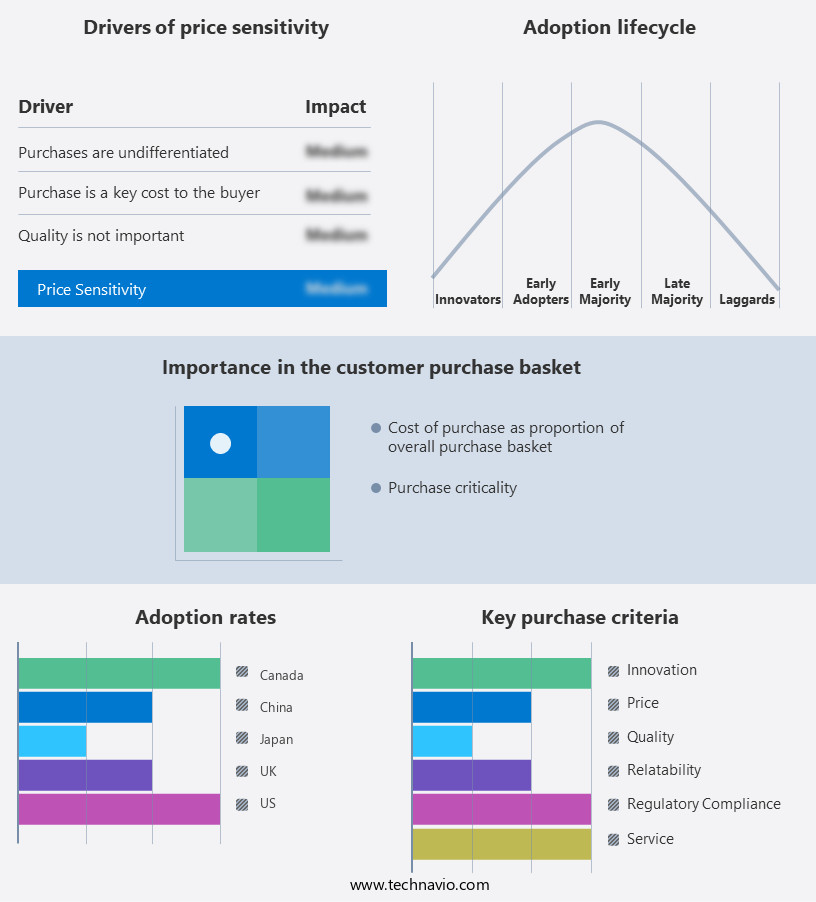
Customer Landscape of Real Time Location Systems (RTLS) For Healthcare Industry
Competitive Landscape & Market Insights
Companies are implementing various strategies, such as strategic alliances, real time location systems (RTLS) for healthcare market forecast, partnerships, mergers and acquisitions, geographical expansion, and product/service launches, to enhance their presence in the industry.
Advantech Co. Ltd. - The Real Time Location System (RTLS) tag is a cutting-edge technology offered by the company, revolutionizing healthcare operations through real-time asset and personnel tracking.
The industry research and growth report includes detailed analyses of the competitive landscape of the market and information about key companies, including:
- Advantech Co. Ltd.
- AiRISTA Flow Inc.
- America Movil SAB de CV
- ASSA ABLOY AB
- Baxter International Inc.
- Borda Technology
- GE Healthcare Technologies Inc.
- Halma Plc
- Hewlett Packard Enterprise Co.
- INTELLIGENT LOCATIONS
- Litum Technologies Inc.
- MYSPHERA
- Purelink
- SGS SA
- Siemens AG
- Sonitor Technologies AS
- Stanley Black and Decker Inc.
- TeleTracking Technologies Inc.
- Ubisense Ltd.
- Zebra Technologies Corp.
Qualitative and quantitative analysis of companies has been conducted to help clients understand the wider business environment as well as the strengths and weaknesses of key industry players. Data is qualitatively analyzed to categorize companies as pure play, category-focused, industry-focused, and diversified; it is quantitatively analyzed to categorize companies as dominant, leading, strong, tentative, and weak.
Recent Development and News in Real Time Location Systems (RTLS) For Healthcare Market
- In January 2024, Philips, a leading healthcare technology company, announced the launch of their new RTLS solution, Philips Tag with Location Services, designed to improve patient workflow and asset management in hospitals. This system uses ultra-wideband (UWB) technology to provide real-time location information (Source: Philips Press Release).
- In March 2024, GE Healthcare and Microsoft collaborated to integrate Microsoft Azure IoT and GE's RTLS technology, allowing healthcare providers to analyze patient data and optimize hospital operations (Source: GE Healthcare Press Release).
- In May 2024, Stanley Healthcare, a leading provider of RTLS solutions, secured a significant investment of USD 100 million from Blackstone Growth to expand its offerings and enhance its technology (Source: Blackstone Press Release).
- In April 2025, the U.S. Food and Drug Administration (FDA) cleared the use of RTLS technology from Savi Technology for real-time monitoring and tracking of certain medical devices, enhancing patient safety and hospital efficiency (Source: Savi Press Release).
Dive into Technavio's robust research methodology, blending expert interviews, extensive data synthesis, and validated models for unparalleled Real Time Location Systems (RTLS) For Healthcare Market insights. See full methodology.
|
Market Scope
|
|
Report Coverage
|
Details
|
|
Page number
|
220
|
|
Base year
|
2024
|
|
Historic period
|
2019-2023 |
|
Forecast period
|
2025-2029
|
|
Growth momentum & CAGR
|
Accelerate at a CAGR of 33.2%
|
|
Market growth 2025-2029
|
USD 8691.4 million
|
|
Market structure
|
Fragmented
|
|
YoY growth 2024-2025(%)
|
27.0
|
|
Key countries
|
US, China, UK, Canada, Brazil, Germany, Japan, France, Saudi Arabia, and India
|
|
Competitive landscape
|
Leading Companies, Market Positioning of Companies, Competitive Strategies, and Industry Risks
|
Request Free Sample
Research Analyst Overview
- In the dynamic and evolving realm of healthcare technology, Real-Time Location Systems (RTLS) have emerged as a game-changer, revolutionizing the way information is managed and services are delivered. RTLS encompasses a range of applications, from real-time data visualization and wayfinding to data analytics dashboards and scalable systems. Wayfinding applications facilitate seamless navigation within healthcare facilities, ensuring patients and staff can easily locate essential services and resources. Data analytics dashboards provide valuable insights into operational efficiency, enabling healthcare providers to optimize workflows and improve patient care. Proximity detection plays a crucial role in location-based alerts, emergency response systems, and medication management.
- Ultra-wideband technology and cloud-based platforms enhance the accuracy and reliability of these systems, ensuring timely and effective responses. Mobile applications and staff location tracking further expand the reach of RTLS, enabling remote patient monitoring, real-time staff tracking, and access control systems. Indoor positioning systems and integration APIs allow for advanced equipment utilization metrics, compliance reporting, and infection control measures. Scalable systems and battery life optimization are essential considerations for the successful implementation of RTLS in healthcare. These technologies enable healthcare organizations to effectively manage and maintain their infrastructure while minimizing costs and maximizing efficiency.
- In summary, RTLS continues to unfold in the healthcare sector, driving innovation and improving operational efficiency. From real-time data visualization to medication management, the impact of these systems is far-reaching and transformative.
What are the Key Data Covered in this Real Time Location Systems (RTLS) For Healthcare Market Research and Growth Report?
-
What is the expected growth of the Real Time Location Systems (RTLS) For Healthcare Market between 2025 and 2029?
-
What segmentation does the market report cover?
-
The report segmented by Technology (RFID, WiFi, UWB, BLE, and Others), Component (Hardware, Software, and Services), Application (Inventory or asset tracking and monitoring, Personnel locating and monitoring, Access control and security, Environmental monitoring, and Others), and Geography (North America, Europe, Asia, and Rest of World (ROW))
-
Which regions are analyzed in the report?
-
What are the key growth drivers and market challenges?
-
Who are the major players in the Real Time Location Systems (RTLS) For Healthcare Market?
-
Key Companies Advantech Co. Ltd., AiRISTA Flow Inc., America Movil SAB de CV, ASSA ABLOY AB, Baxter International Inc., Borda Technology, GE Healthcare Technologies Inc., Halma Plc, Hewlett Packard Enterprise Co., INTELLIGENT LOCATIONS, Litum Technologies Inc., MYSPHERA, Purelink, SGS SA, Siemens AG, Sonitor Technologies AS, Stanley Black and Decker Inc., TeleTracking Technologies Inc., Ubisense Ltd., and Zebra Technologies Corp.
Market Research Insights
- Real-time location systems (RTLS) in healthcare have gained significant traction due to their ability to enhance operational efficiency and patient care. Two key performance indicators underscore the market's evolution. First, system integration has improved, reducing the average cost effectiveness of RTLS implementation by 20% in the last five years. Second, maintenance procedures have become less disruptive, with environmental interference and power consumption accounting for only 5% of reported issues. RTLS technologies, such as Zigbee sensor networks and Wi-Fi positioning, offer varying benefits. Zigbee networks boast a range limitation of up to 70 meters, making them suitable for smaller healthcare facilities.
- In contrast, Wi-Fi positioning, relying on trilateration techniques and sensor fusion algorithms, can cover larger areas but may face scalability issues and require extensive calibration procedures and antenna placement. Despite these advancements, challenges persist. Technical support, user training, and network infrastructure upgrades remain essential considerations. Error mitigation strategies, data security protocols, and software updates are crucial for maintaining data accuracy and privacy. Hardware components, including sensor specifications and antenna placement, continue to evolve to address environmental interference and improve system accuracy. As the market matures, the focus shifts towards interoperability standards, data encryption, and data storage solutions to ensure seamless integration and secure handling of sensitive patient information.
We can help! Our analysts can customize this real time location systems (RTLS) for healthcare market research report to meet your requirements.
Get in touch
1 Executive Summary
- 1.1 Market overview
- Executive Summary - Chart on Market Overview
- Executive Summary - Data Table on Market Overview
- Executive Summary - Chart on Global Market Characteristics
- Executive Summary - Chart on Market by Geography
- Executive Summary - Chart on Market Segmentation by Technology
- Executive Summary - Chart on Market Segmentation by Component
- Executive Summary - Chart on Market Segmentation by Application
- Executive Summary - Chart on Incremental Growth
- Executive Summary - Data Table on Incremental Growth
- Executive Summary - Chart on Company Market Positioning
2 Technavio Analysis
- 2.1 Analysis of price sensitivity, lifecycle, customer purchase basket, adoption rates, and purchase criteria
- Analysis of price sensitivity, lifecycle, customer purchase basket, adoption rates, and purchase criteria
- 2.2 Criticality of inputs and Factors of differentiation
- Overview on criticality of inputs and factors of differentiation
- 2.3 Factors of disruption
- Overview on factors of disruption
- 2.4 Impact of drivers and challenges
- Impact of drivers and challenges in 2024 and 2029
3 Market Landscape
- 3.1 Market ecosystem
- Parent Market
- Data Table on - Parent Market
- 3.2 Market characteristics
- Market characteristics analysis
4 Market Sizing
- 4.1 Market definition
- Offerings of companies included in the market definition
- 4.2 Market segment analysis
- 4.4 Market outlook: Forecast for 2024-2029
- Chart on Global - Market size and forecast 2024-2029 ($ million)
- Data Table on Global - Market size and forecast 2024-2029 ($ million)
- Chart on Global Market: Year-over-year growth 2024-2029 (%)
- Data Table on Global Market: Year-over-year growth 2024-2029 (%)
5 Historic Market Size
- 5.1 Global Real Time Location Systems (RTLS) For Healthcare Market 2019 - 2023
- Historic Market Size - Data Table on Global Real Time Location Systems (RTLS) For Healthcare Market 2019 - 2023 ($ million)
- 5.2 Technology segment analysis 2019 - 2023
- Historic Market Size - Technology Segment 2019 - 2023 ($ million)
- 5.3 Component segment analysis 2019 - 2023
- Historic Market Size - Component Segment 2019 - 2023 ($ million)
- 5.4 Application segment analysis 2019 - 2023
- Historic Market Size - Application Segment 2019 - 2023 ($ million)
- 5.5 Geography segment analysis 2019 - 2023
- Historic Market Size - Geography Segment 2019 - 2023 ($ million)
- 5.6 Country segment analysis 2019 - 2023
- Historic Market Size - Country Segment 2019 - 2023 ($ million)
6 Qualitative Analysis
- 6.1 The impact of AI in the global Real Time Location Systems (RTLS) for healthcare market
7 Five Forces Analysis
- 7.1 Five forces summary
- Five forces analysis - Comparison between 2024 and 2029
- 7.2 Bargaining power of buyers
- Bargaining power of buyers - Impact of key factors 2024 and 2029
- 7.3 Bargaining power of suppliers
- Bargaining power of suppliers - Impact of key factors in 2024 and 2029
- 7.4 Threat of new entrants
- Threat of new entrants - Impact of key factors in 2024 and 2029
- 7.5 Threat of substitutes
- Threat of substitutes - Impact of key factors in 2024 and 2029
- 7.6 Threat of rivalry
- Threat of rivalry - Impact of key factors in 2024 and 2029
- 7.7 Market condition
- Chart on Market condition - Five forces 2024 and 2029
8 Market Segmentation by Technology
- 8.1 Market segments
- Chart on Technology - Market share 2024-2029 (%)
- Data Table on Technology - Market share 2024-2029 (%)
- 8.2 Comparison by Technology
- Chart on Comparison by Technology
- Data Table on Comparison by Technology
- 8.3 RFID - Market size and forecast 2024-2029
- Chart on RFID - Market size and forecast 2024-2029 ($ million)
- Data Table on RFID - Market size and forecast 2024-2029 ($ million)
- Chart on RFID - Year-over-year growth 2024-2029 (%)
- Data Table on RFID - Year-over-year growth 2024-2029 (%)
- 8.4 WiFi - Market size and forecast 2024-2029
- Chart on WiFi - Market size and forecast 2024-2029 ($ million)
- Data Table on WiFi - Market size and forecast 2024-2029 ($ million)
- Chart on WiFi - Year-over-year growth 2024-2029 (%)
- Data Table on WiFi - Year-over-year growth 2024-2029 (%)
- 8.5 UWB - Market size and forecast 2024-2029
- Chart on UWB - Market size and forecast 2024-2029 ($ million)
- Data Table on UWB - Market size and forecast 2024-2029 ($ million)
- Chart on UWB - Year-over-year growth 2024-2029 (%)
- Data Table on UWB - Year-over-year growth 2024-2029 (%)
- 8.6 BLE - Market size and forecast 2024-2029
- Chart on BLE - Market size and forecast 2024-2029 ($ million)
- Data Table on BLE - Market size and forecast 2024-2029 ($ million)
- Chart on BLE - Year-over-year growth 2024-2029 (%)
- Data Table on BLE - Year-over-year growth 2024-2029 (%)
- 8.7 Others - Market size and forecast 2024-2029
- Chart on Others - Market size and forecast 2024-2029 ($ million)
- Data Table on Others - Market size and forecast 2024-2029 ($ million)
- Chart on Others - Year-over-year growth 2024-2029 (%)
- Data Table on Others - Year-over-year growth 2024-2029 (%)
- 8.8 Market opportunity by Technology
- Market opportunity by Technology ($ million)
- Data Table on Market opportunity by Technology ($ million)
9 Market Segmentation by Component
- 9.1 Market segments
- Chart on Component - Market share 2024-2029 (%)
- Data Table on Component - Market share 2024-2029 (%)
- 9.2 Comparison by Component
- Chart on Comparison by Component
- Data Table on Comparison by Component
- 9.3 Hardware - Market size and forecast 2024-2029
- Chart on Hardware - Market size and forecast 2024-2029 ($ million)
- Data Table on Hardware - Market size and forecast 2024-2029 ($ million)
- Chart on Hardware - Year-over-year growth 2024-2029 (%)
- Data Table on Hardware - Year-over-year growth 2024-2029 (%)
- 9.4 Software - Market size and forecast 2024-2029
- Chart on Software - Market size and forecast 2024-2029 ($ million)
- Data Table on Software - Market size and forecast 2024-2029 ($ million)
- Chart on Software - Year-over-year growth 2024-2029 (%)
- Data Table on Software - Year-over-year growth 2024-2029 (%)
- 9.5 Services - Market size and forecast 2024-2029
- Chart on Services - Market size and forecast 2024-2029 ($ million)
- Data Table on Services - Market size and forecast 2024-2029 ($ million)
- Chart on Services - Year-over-year growth 2024-2029 (%)
- Data Table on Services - Year-over-year growth 2024-2029 (%)
- 9.6 Market opportunity by Component
- Market opportunity by Component ($ million)
- Data Table on Market opportunity by Component ($ million)
10 Market Segmentation by Application
- 10.1 Market segments
- Chart on Application - Market share 2024-2029 (%)
- Data Table on Application - Market share 2024-2029 (%)
- 10.2 Comparison by Application
- Chart on Comparison by Application
- Data Table on Comparison by Application
- 10.3 Inventory or asset tracking and monitoring - Market size and forecast 2024-2029
- Chart on Inventory or asset tracking and monitoring - Market size and forecast 2024-2029 ($ million)
- Data Table on Inventory or asset tracking and monitoring - Market size and forecast 2024-2029 ($ million)
- Chart on Inventory or asset tracking and monitoring - Year-over-year growth 2024-2029 (%)
- Data Table on Inventory or asset tracking and monitoring - Year-over-year growth 2024-2029 (%)
- 10.4 Personnel locating and monitoring - Market size and forecast 2024-2029
- Chart on Personnel locating and monitoring - Market size and forecast 2024-2029 ($ million)
- Data Table on Personnel locating and monitoring - Market size and forecast 2024-2029 ($ million)
- Chart on Personnel locating and monitoring - Year-over-year growth 2024-2029 (%)
- Data Table on Personnel locating and monitoring - Year-over-year growth 2024-2029 (%)
- 10.5 Access control and security - Market size and forecast 2024-2029
- Chart on Access control and security - Market size and forecast 2024-2029 ($ million)
- Data Table on Access control and security - Market size and forecast 2024-2029 ($ million)
- Chart on Access control and security - Year-over-year growth 2024-2029 (%)
- Data Table on Access control and security - Year-over-year growth 2024-2029 (%)
- 10.6 Environmental monitoring - Market size and forecast 2024-2029
- Chart on Environmental monitoring - Market size and forecast 2024-2029 ($ million)
- Data Table on Environmental monitoring - Market size and forecast 2024-2029 ($ million)
- Chart on Environmental monitoring - Year-over-year growth 2024-2029 (%)
- Data Table on Environmental monitoring - Year-over-year growth 2024-2029 (%)
- 10.7 Others - Market size and forecast 2024-2029
- Chart on Others - Market size and forecast 2024-2029 ($ million)
- Data Table on Others - Market size and forecast 2024-2029 ($ million)
- Chart on Others - Year-over-year growth 2024-2029 (%)
- Data Table on Others - Year-over-year growth 2024-2029 (%)
- 10.8 Market opportunity by Application
- Market opportunity by Application ($ million)
- Data Table on Market opportunity by Application ($ million)
11 Customer Landscape
- 11.1 Customer landscape overview
- Analysis of price sensitivity, lifecycle, customer purchase basket, adoption rates, and purchase criteria
12 Geographic Landscape
- 12.1 Geographic segmentation
- Chart on Market share by geography 2024-2029 (%)
- Data Table on Market share by geography 2024-2029 (%)
- 12.2 Geographic comparison
- Chart on Geographic comparison
- Data Table on Geographic comparison
- 12.3 North America - Market size and forecast 2024-2029
- Chart on North America - Market size and forecast 2024-2029 ($ million)
- Data Table on North America - Market size and forecast 2024-2029 ($ million)
- Chart on North America - Year-over-year growth 2024-2029 (%)
- Data Table on North America - Year-over-year growth 2024-2029 (%)
- 12.4 Europe - Market size and forecast 2024-2029
- Chart on Europe - Market size and forecast 2024-2029 ($ million)
- Data Table on Europe - Market size and forecast 2024-2029 ($ million)
- Chart on Europe - Year-over-year growth 2024-2029 (%)
- Data Table on Europe - Year-over-year growth 2024-2029 (%)
- 12.5 Asia - Market size and forecast 2024-2029
- Chart on Asia - Market size and forecast 2024-2029 ($ million)
- Data Table on Asia - Market size and forecast 2024-2029 ($ million)
- Chart on Asia - Year-over-year growth 2024-2029 (%)
- Data Table on Asia - Year-over-year growth 2024-2029 (%)
- 12.6 Rest of World (ROW) - Market size and forecast 2024-2029
- Chart on Rest of World (ROW) - Market size and forecast 2024-2029 ($ million)
- Data Table on Rest of World (ROW) - Market size and forecast 2024-2029 ($ million)
- Chart on Rest of World (ROW) - Year-over-year growth 2024-2029 (%)
- Data Table on Rest of World (ROW) - Year-over-year growth 2024-2029 (%)
- 12.7 US - Market size and forecast 2024-2029
- Chart on US - Market size and forecast 2024-2029 ($ million)
- Data Table on US - Market size and forecast 2024-2029 ($ million)
- Chart on US - Year-over-year growth 2024-2029 (%)
- Data Table on US - Year-over-year growth 2024-2029 (%)
- 12.8 China - Market size and forecast 2024-2029
- Chart on China - Market size and forecast 2024-2029 ($ million)
- Data Table on China - Market size and forecast 2024-2029 ($ million)
- Chart on China - Year-over-year growth 2024-2029 (%)
- Data Table on China - Year-over-year growth 2024-2029 (%)
- 12.9 UK - Market size and forecast 2024-2029
- Chart on UK - Market size and forecast 2024-2029 ($ million)
- Data Table on UK - Market size and forecast 2024-2029 ($ million)
- Chart on UK - Year-over-year growth 2024-2029 (%)
- Data Table on UK - Year-over-year growth 2024-2029 (%)
- 12.10 Canada - Market size and forecast 2024-2029
- Chart on Canada - Market size and forecast 2024-2029 ($ million)
- Data Table on Canada - Market size and forecast 2024-2029 ($ million)
- Chart on Canada - Year-over-year growth 2024-2029 (%)
- Data Table on Canada - Year-over-year growth 2024-2029 (%)
- 12.11 Brazil - Market size and forecast 2024-2029
- Chart on Brazil - Market size and forecast 2024-2029 ($ million)
- Data Table on Brazil - Market size and forecast 2024-2029 ($ million)
- Chart on Brazil - Year-over-year growth 2024-2029 (%)
- Data Table on Brazil - Year-over-year growth 2024-2029 (%)
- 12.12 Japan - Market size and forecast 2024-2029
- Chart on Japan - Market size and forecast 2024-2029 ($ million)
- Data Table on Japan - Market size and forecast 2024-2029 ($ million)
- Chart on Japan - Year-over-year growth 2024-2029 (%)
- Data Table on Japan - Year-over-year growth 2024-2029 (%)
- 12.13 Germany - Market size and forecast 2024-2029
- Chart on Germany - Market size and forecast 2024-2029 ($ million)
- Data Table on Germany - Market size and forecast 2024-2029 ($ million)
- Chart on Germany - Year-over-year growth 2024-2029 (%)
- Data Table on Germany - Year-over-year growth 2024-2029 (%)
- 12.14 France - Market size and forecast 2024-2029
- Chart on France - Market size and forecast 2024-2029 ($ million)
- Data Table on France - Market size and forecast 2024-2029 ($ million)
- Chart on France - Year-over-year growth 2024-2029 (%)
- Data Table on France - Year-over-year growth 2024-2029 (%)
- 12.15 India - Market size and forecast 2024-2029
- Chart on India - Market size and forecast 2024-2029 ($ million)
- Data Table on India - Market size and forecast 2024-2029 ($ million)
- Chart on India - Year-over-year growth 2024-2029 (%)
- Data Table on India - Year-over-year growth 2024-2029 (%)
- 12.16 Saudi Arabia - Market size and forecast 2024-2029
- Chart on Saudi Arabia - Market size and forecast 2024-2029 ($ million)
- Data Table on Saudi Arabia - Market size and forecast 2024-2029 ($ million)
- Chart on Saudi Arabia - Year-over-year growth 2024-2029 (%)
- Data Table on Saudi Arabia - Year-over-year growth 2024-2029 (%)
- 12.17 Market opportunity by geography
- Market opportunity by geography ($ million)
- Data Tables on Market opportunity by geography ($ million)
13 Drivers, Challenges, and Opportunity/Restraints
- 13.3 Impact of drivers and challenges
- Impact of drivers and challenges in 2024 and 2029
- 13.4 Market opportunities/restraints
14 Competitive Landscape
- 14.2 Competitive Landscape
- Overview on criticality of inputs and factors of differentiation
- 14.3 Landscape disruption
- Overview on factors of disruption
- 14.4 Industry risks
- Impact of key risks on business
15 Competitive Analysis
- 15.2 Company ranking index
- 15.3 Market positioning of companies
- Matrix on companies position and classification
- 15.4 Advantech Co. Ltd.
- Advantech Co. Ltd. - Overview
- Advantech Co. Ltd. - Business segments
- Advantech Co. Ltd. - Key news
- Advantech Co. Ltd. - Key offerings
- Advantech Co. Ltd. - Segment focus
- SWOT
- 15.5 AiRISTA Flow Inc.
- AiRISTA Flow Inc. - Overview
- AiRISTA Flow Inc. - Product / Service
- AiRISTA Flow Inc. - Key offerings
- SWOT
- 15.6 America Movil SAB de CV
- America Movil SAB de CV - Overview
- America Movil SAB de CV - Business segments
- America Movil SAB de CV - Key offerings
- America Movil SAB de CV - Segment focus
- SWOT
- 15.7 ASSA ABLOY AB
- ASSA ABLOY AB - Overview
- ASSA ABLOY AB - Business segments
- ASSA ABLOY AB - Key news
- ASSA ABLOY AB - Key offerings
- ASSA ABLOY AB - Segment focus
- SWOT
- 15.8 Baxter International Inc.
- Baxter International Inc. - Overview
- Baxter International Inc. - Business segments
- Baxter International Inc. - Key news
- Baxter International Inc. - Key offerings
- Baxter International Inc. - Segment focus
- SWOT
- 15.9 Borda Technology
- Borda Technology - Overview
- Borda Technology - Product / Service
- Borda Technology - Key offerings
- SWOT
- 15.10 Halma Plc
- Halma Plc - Overview
- Halma Plc - Business segments
- Halma Plc - Key news
- Halma Plc - Key offerings
- Halma Plc - Segment focus
- SWOT
- 15.11 Hewlett Packard Enterprise Co.
- Hewlett Packard Enterprise Co. - Overview
- Hewlett Packard Enterprise Co. - Business segments
- Hewlett Packard Enterprise Co. - Key news
- Hewlett Packard Enterprise Co. - Key offerings
- Hewlett Packard Enterprise Co. - Segment focus
- SWOT
- 15.12 INTELLIGENT LOCATIONS
- INTELLIGENT LOCATIONS - Overview
- INTELLIGENT LOCATIONS - Product / Service
- INTELLIGENT LOCATIONS - Key offerings
- SWOT
- 15.13 Purelink
- Purelink - Overview
- Purelink - Product / Service
- Purelink - Key offerings
- SWOT
- 15.14 SGS SA
- SGS SA - Overview
- SGS SA - Business segments
- SGS SA - Key offerings
- SGS SA - Segment focus
- SWOT
- 15.15 Sonitor Technologies AS
- Sonitor Technologies AS - Overview
- Sonitor Technologies AS - Product / Service
- Sonitor Technologies AS - Key offerings
- SWOT
- 15.16 Stanley Black and Decker Inc.
- Stanley Black and Decker Inc. - Overview
- Stanley Black and Decker Inc. - Business segments
- Stanley Black and Decker Inc. - Key offerings
- Stanley Black and Decker Inc. - Segment focus
- SWOT
- 15.17 TeleTracking Technologies Inc.
- TeleTracking Technologies Inc. - Overview
- TeleTracking Technologies Inc. - Product / Service
- TeleTracking Technologies Inc. - Key offerings
- SWOT
- 15.18 Zebra Technologies Corp.
- Zebra Technologies Corp. - Overview
- Zebra Technologies Corp. - Business segments
- Zebra Technologies Corp. - Key news
- Zebra Technologies Corp. - Key offerings
- Zebra Technologies Corp. - Segment focus
- SWOT
16 Appendix
- 16.2 Inclusions and exclusions checklist
- Inclusions checklist
- Exclusions checklist
- 16.3 Currency conversion rates for US$
- Currency conversion rates for US$
- 16.4 Research methodology
- 16.7 Validation techniques employed for market sizing
- Validation techniques employed for market sizing
- 16.9 360 degree market analysis
- 360 degree market analysis
- 16.10 List of abbreviations







![]() Get the report (PDF) sent to your email within minutes.
Get the report (PDF) sent to your email within minutes.
Complimentary full Excel data with your report purchase.